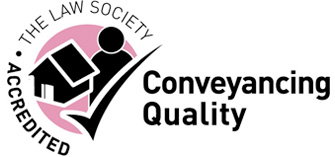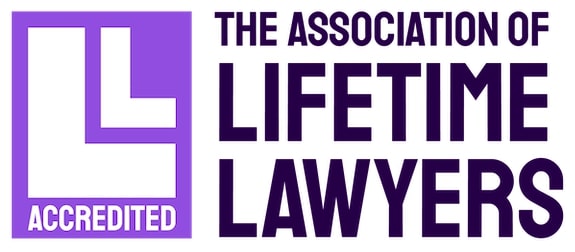Coercive control, a form of domestic abuse, affects many people across the UK, with over 43,000 offences recorded by the police in England and Wales in the year ending March 2023. It encompasses a broad range of behaviours used to exert control over a victim, including physical, emotional, psychological or financial abuse. Coercive control often continues after a relationship ends, especially when children are involved, and may escalate during separation or divorce proceedings. Understanding how to prove coercive control in family court is essential. The courts can use a range of civil remedies to safeguard victims and prevent further harm. By recognising the signs of coercive control and gathering evidence, victims can take critical steps to protect themselves.
Further reading: https://www.womensaid.org.uk/information-support/what-is-domestic-abuse/coercive-control/
What is coercive control?
Refuge, the largest specialist domestic abuse organisation in the UK, describes coercive control as ‘an act, or a pattern of acts, of assault, threats, humiliation and intimidation that abusers use to harm, punish or frighten survivors.’
Further reading: https://refuge.org.uk/i-need-help-now/coercive-control/
Through this behaviour, abusers can exert control over various aspects of their victims’ lives, from who they see and what they wear to how they spend their money.
Coercive control is at the heart of domestic abuse. However, sadly, we all too often speak to individuals who do not realise they are victims until they talk to us about their relationship breakdown.
In some cases, coercive control may continue after or only begin once divorce proceedings have started, with perpetrators attempting to weaponise the legal system to control their victims. At Scott Bailey, our expert divorce solicitors will protect you from this, whether that is through mediation safeguards or defending your interests tenaciously through the courts.
Examples of coercive control
Coercive control covers a broad range of behaviour, including but not limited to:
- Isolating the victim from their friends or family.
- Criticising or embarrassing the victim in public or in front of their friends or family.
- Telling the victim who they can see, where they can go, or what they can wear.
- Denying the victim visibility of their shared finances or not letting them have a say in financial matters.
- Monitoring the victim’s activity, online or offline.
- Threatening the victim or their children’s safety.
- Controlling when the victim can eat, drink or sleep, or what the victim can eat or drink.
- Preventing the victim from getting a job.
- Undermining the victim’s self-esteem by insulting, belittling or gaslighting them.
- Keeping children after a contact session.
- Physical or sexual violence.
Is coercive control illegal?
Coercive control is a criminal offence under the Serious Crime Act 2015 (SCA 2015) and can be punished with a fine or up to five years in prison.
However, as our list of examples shows, coercive control covers a broad range of behaviour, and depending on the outcome of the abuse, the perpetrator may have broken multiple laws. Various legislation is in place to protect victims, including but not limited to the Protection from Harassment Act 1997, the Electronic Communications Act 2000, the Family Law Act 1996, and the Theft Act 1968.
Victims of coercive control or domestic abuse can pursue civil remedies through the courts, but it can be an expensive process. Alternatively, victims can report abuse to the police at no cost. If there is sufficient evidence, the police will refer the matter to the Crown Prosecution Service, which could result in a criminal conviction. Even if the abuser is not found guilty of a crime, the court can use civil remedies to protect the victim, such as non-molestation orders or occupation orders.
How to prove coercive control in family court
It can be hard to prove you are a victim of coercive control, especially if there is no physical abuse. As a result, gathering as much evidence as possible is essential. Evidence may include:
- Digital communications: gathering texts, emails, and social media messages that show a pattern of controlling and abusive behaviour provides strong evidence of coercive control.
- Medical records: GPs and other healthcare professionals often keep detailed consultation notes. These can provide evidence of how coercive control has affected your mental or physical health. Even if you have been unable to discuss the abuse you are suffering with a medical professional because the perpetrator attends appointments with you, your records are likely to state that your abuser was at the appointment, which could be evidence of coercive control.
- Police report: if you have logged incidents of coercive control with the police, these reports could be valuable evidence.
- Witness statements: if anyone, including friends, family, neighbours or coworkers has witnessed your abuser’s controlling behaviour, you should gather witness statements from them.
- Financial records: any documentation you can gather highlighting how the perpetrator has controlled your finances or restricted your access to money could be evidence of coercive control.
- Written records: keeping a log of all the perpetrator’s abusive and controlling behaviour can provide a valuable resource to refer back to and help illustrate the abuse you have suffered.
- Photos and videos: photographic evidence of any injuries you have sustained or damage to your property will be strong evidence.

The Impact of Coercive Control on Divorce Proceedings
You do not have to prove you are the victim of coercive control to get divorced. The introduction of no-fault divorces in 2022 removed the need to apportion blame or prove unreasonable behaviour.
However, the court may take proof of coercive control into account when dealing with finances or child arrangements.
Proving you are a victim of coercive control will not necessarily affect your financial settlement. The court will only consider conduct as a factor in exceptional circumstances. However, the court can address coercive control, including financial abuse or attempts to delay divorce proceedings, hide assets, or dispose of assets before financial proceedings are concluded, in other ways, such as cost orders or compensation.
When making child arrangements, the court prioritises children’s well-being and always acts in their best interests.
When a party makes allegations of coercive control in the family court in private children proceedings (between parents), the judge can order a separate fact-finding hearing. As the name suggests, these hearings aim to establish whether an allegation is true by allowing both parties to present evidence and cross-examine each other’s witnesses before the court reaches a judgment.
In civil cases, such as fact-finding hearings, allegations do not need to be proven beyond a reasonable doubt. Instead, based on the evidence presented, the judge decides whether it is more likely than not that the allegations are true – a standard of proof known as the ‘balance of probabilities.
The outcome of a fact-finding hearing will inform future legal proceedings.
It is not uncommon for abusers to make false allegations during proceedings, resulting in a fact-finding hearing.
Proving you have been the victim of coercive control will call into question whether your abuser poses a risk to your children. If they are deemed a risk, the court can take precautions to safeguard your children, including:
- Supervised contact: the parent can only have contact with their children when supervised by a professional or family member in a secure setting, such as a contact centre or a relative’s home.
- Child arrangement order: a court order instructing when, where, and how a parent can contact their children. In extreme cases, the court may prevent direct contact between the perpetrator and their children.
Alongside safeguarding children, the court may use these civil remedies to ensure the perpetrator cannot use their children to continue their controlling behaviour.
Civil Remedies for Coercive Control
There are a variety of civil remedies the courts can use to protect victims of coercive control:
- Protection Orders: Restrict or prevent the perpetrator from contacting or approaching the victim.
- Non-Molestation Orders: Prohibits the perpetrator from harassing, threatening, intimidating or using physical violence against the victim or their children.
- Occupation Orders: Excludes the perpetrator from part of the property they share with the victim, the whole property, or an area around the property.
- Compensation: In civil cases, victims of coercive control can seek compensation from their abuser for any damage to their physical or mental health or economic losses, including loss of earnings, resulting from the abuse they have suffered. Victims may also be able to seek compensation for physical, sexual, psychological, or financial abuse that has resulted in a criminal conviction from the Criminal Injuries Compensation Authority (CICA) without the perpetrator needing to know.
- Injunctions: Court orders that prohibit or require someone to do something
- Undertakings: If there is insufficient evidence to issue a court order, the court can require abusers to sign undertakings – formal promises to refrain from certain behaviours.
- Child Arrangement Orders (CAOs): CAOs specify if, when, where and how a parent can contact their children. Alongside protecting children, the courts can use CAOs to ensure abusers cannot use their children to control their victims after they have separated.
Failing to comply with some civil court orders, such as a non-molestation order is a criminal offence and can result in fines or a prison sentence.
Whether you are currently in an abusive relationship, going through a separation, or already separated, Scott Bailey’s expert family law and divorce solicitors are here to support you. Our team will take the time to understand your unique circumstances before acting decisively to safeguard you and your family. With extensive experience representing victims of coercive control, you can trust our specialist solicitors to provide the highest standard of legal advice, ensuring you are protected throughout any proceedings. Contact us to arrange a consultation.










